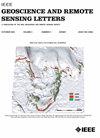基于CNN双视角注意的海杂波海事雷达目标检测
IF 4
3区 地球科学
Q2 ENGINEERING, ELECTRICAL & ELECTRONIC
引用次数: 4
摘要
基于雷达的海上目标探测在海洋监测中发挥着重要作用。考虑到实际应用,脉冲压缩雷达在民用海面目标探测中得到了广泛的应用。海杂波的存在会极大地干扰脉冲压缩雷达的探测性能。这导致了恒虚警率(CFAR)等传统算法检测性能较低。深度学习方法最近在许多领域取得了长足的进步,比如自然语言处理和语音识别。受此启发,我们提出了一种基于卷积神经网络(CNN)和双视角注意(DPA)的海杂波海洋雷达目标检测方法。该方法首先在高维空间对雷达回波进行编码,然后通过注意机制从全局和局部两个角度提取相关特征。我们在中国海南沿海部署了x波段脉冲压缩雷达,并收集了大量的测量数据。实验结果表明,该方法的检测性能优于传统的CFAR方法和最新的基于深度学习的方法。在实测数据集中,在虚警率(FAR)为$1e-3$的情况下,本文方法的检测概率达到了93.59%,达到了实际应用水平。本文章由计算机程序翻译,如有差异,请以英文原文为准。
Maritime Radar Target Detection in Sea Clutter Based on CNN With Dual-Perspective Attention
Radar-based maritime target detection plays an important role in ocean monitoring. Considering the practical application, pulse-compression radar is widely used in terms of civilian offshore surface target detection. The existence of sea clutter will greatly interfere the detection performance of pulse-compression radar. This leads to the low detection performance of traditional algorithms like constant false alarm rate (CFAR). Deep learning methods have made strides in many fields recently, such as natural language processing and speech recognition. Inspired by this idea, we propose a maritime radar target detection method in sea clutter based on convolution neural network (CNN) and dual-perspective attention (DPA). The proposed method first encodes the radar echo in high-dimensional space and then extracts the correlation features from the global and local perspectives through the attention mechanism. We deployed the X-band pulse-compression radar on the coast of Hainan, China, and collected a lot of measured data. Experimental results demonstrate that the detection performance of our method outperforms the traditional CFAR methods and the latest deep learning-based methods. In the measured dataset, our proposed method can reach a detection probability of 93.59% under a false alarm rate (FAR) of $1e-3$ , reaching the practical application level.
求助全文
通过发布文献求助,成功后即可免费获取论文全文。
去求助
来源期刊

IEEE Geoscience and Remote Sensing Letters
工程技术-地球化学与地球物理
CiteScore
7.60
自引率
12.50%
发文量
1113
审稿时长
3.4 months
期刊介绍:
IEEE Geoscience and Remote Sensing Letters (GRSL) is a monthly publication for short papers (maximum length 5 pages) addressing new ideas and formative concepts in remote sensing as well as important new and timely results and concepts. Papers should relate to the theory, concepts and techniques of science and engineering as applied to sensing the earth, oceans, atmosphere, and space, and the processing, interpretation, and dissemination of this information. The technical content of papers must be both new and significant. Experimental data must be complete and include sufficient description of experimental apparatus, methods, and relevant experimental conditions. GRSL encourages the incorporation of "extended objects" or "multimedia" such as animations to enhance the shorter papers.
 求助内容:
求助内容: 应助结果提醒方式:
应助结果提醒方式:


